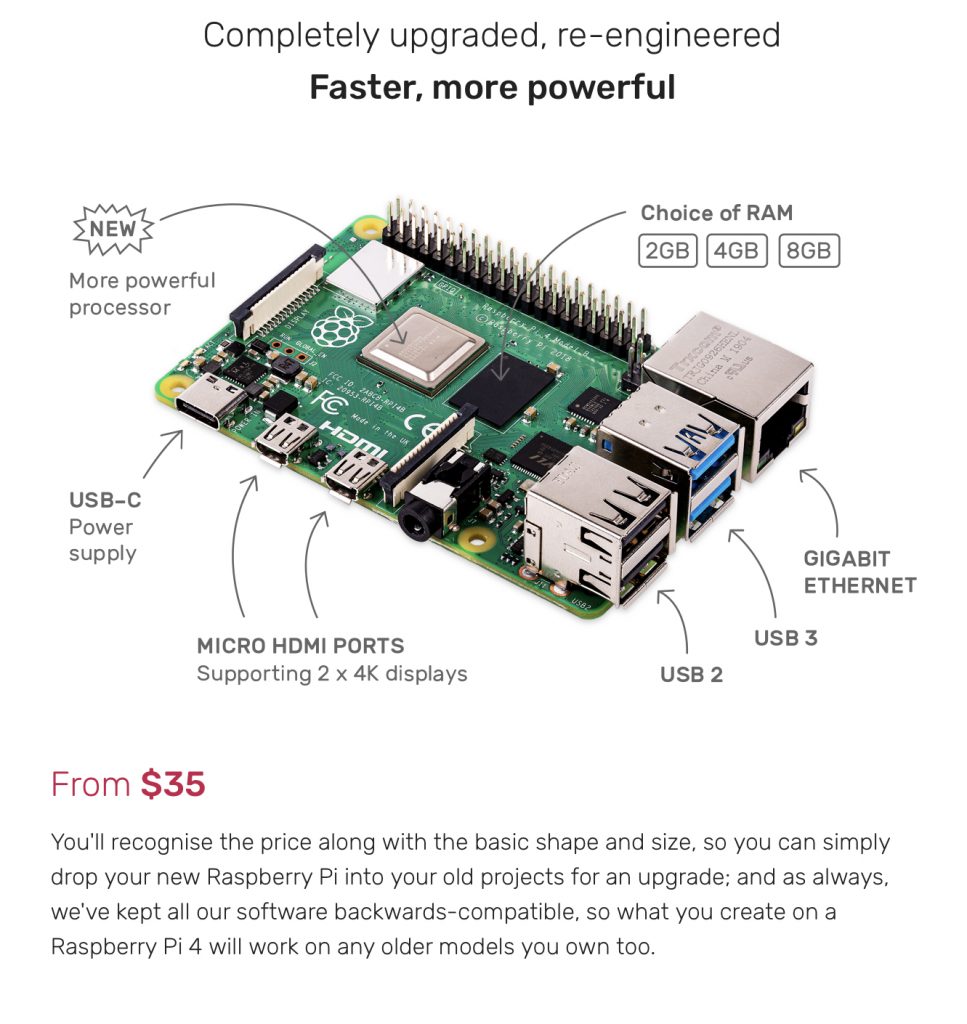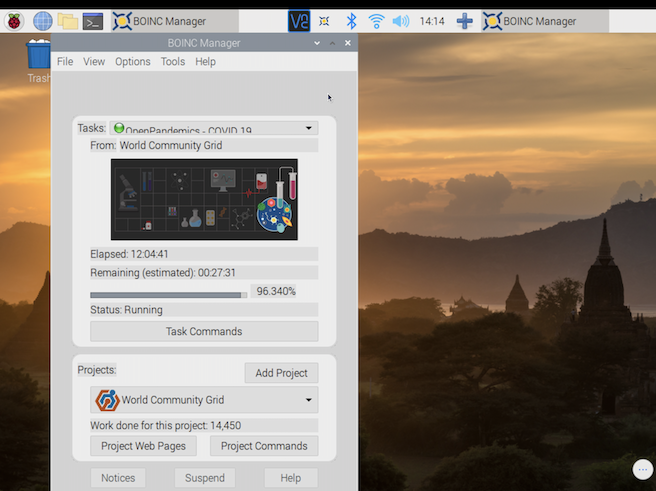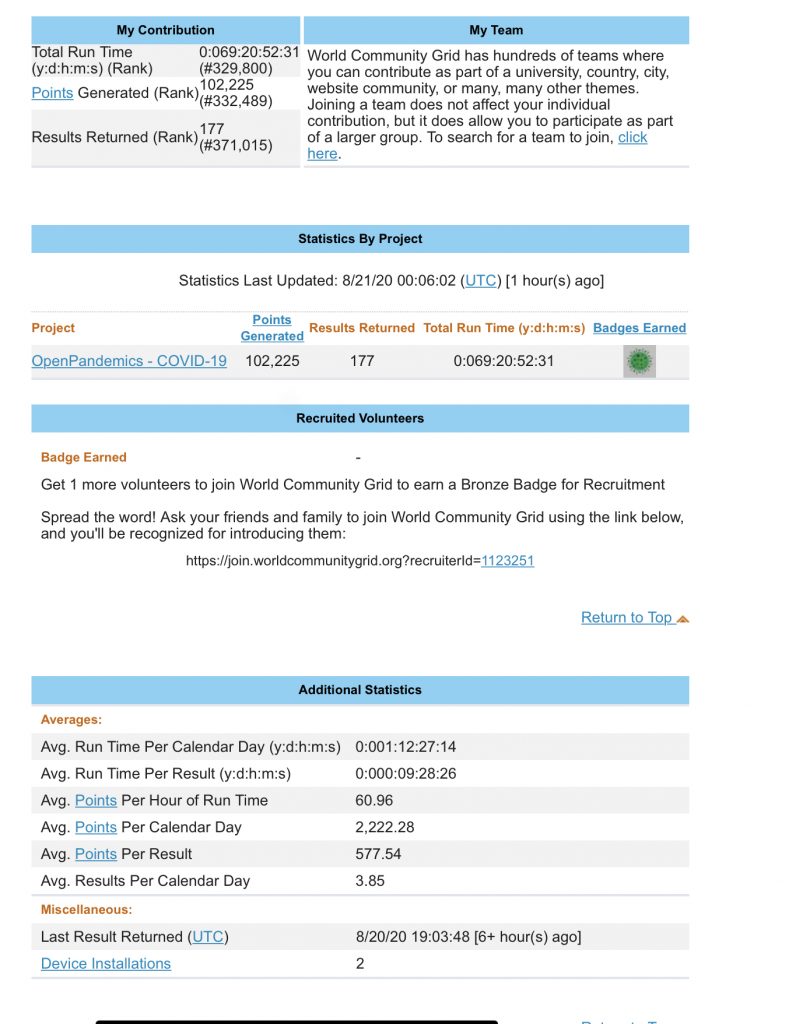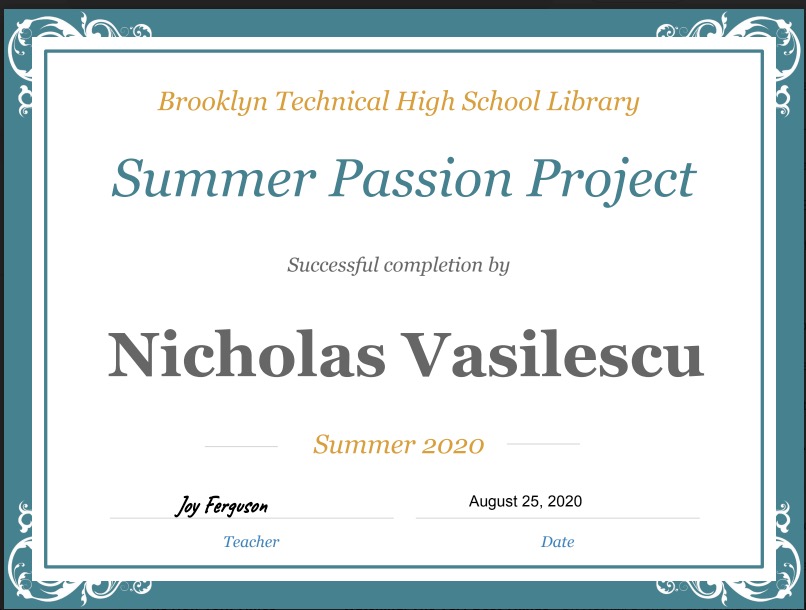In summe of 2020, I did a Passion Project for my high school, Brooklyn Technical High School. My plan for this project was to use my love of art, history and technology and combine them to understand what is going on in society today.
My Passion Project is called The Artist As An Activist.
As a student artist myself, I though it important to explore the role of artists in society. In particular, I wanted to understant the role of artists using art to make a political statement and engaging in society. I wanted to demonstrate that artists are not just looking from above society and being aloof. Rather, artists have a history of heavily participating in society and using art to make powerful statements, including political statements. Also, I wanted to show that it is important for artists to give practical help to society. I hope to achieve with this project teaching people how artists have a long history of making political statements through their art. Also my project teaches that today one can make a political statement using art. Finally, my project teaches that artists can roll up their sleeves and give practical assistance to society.
I learned many things doing this project. I learned how to research various important artists. I learned how they made political expressions through their art. I learned how to use the Procreate App on an iPad to make digital art. I made my first art that makes a political statement about today’s society. Finally, as an artist, I rolled up my sleeve and learned to help society using technology. In particular, I learned how to set up a Raspberry Pi, a small very inexpensive computer. Also, I learned how to use Unix commands on a terminal app to install a program that works with a non-profit technology program.
This Passion Project had three parts to it. 1) Research and essays on how artists use art to make a political statement in society; 2) my own art that makes a political statement; and 3) a demonstration of way to use cheap technology to assist society.
For the first point, I researched four great artists to see how they used art for political statements:
Francisco Goya (1746-1828);
Pablo Picasso (1881-1973);
Ai Wei Wei (1957-present);
and Kadir Nelson (1974-present).
I wrote essays on each of them. Each artist is from a different period of time or different generation and show a continuity on how artists make political statements through their work.
Second, I made my own art. I was going to use oil on a canvas but I decided in the end to make digital art using the Procreate app on an iPad. My art is trying to make a statement regarding what happened in 2020 particularly from spring to late summer. I try to incorporate images and thoughts that are particularly dominant during this time.
Third, I did a sub-project to help out society using technology to assist biology scientists. The scientists are doing research to stop the Coronavirus (Covid-19). There is an open source project where people can have their computers donate processor power to Scripps Research. Scripps Research is a nonprofit American medical research facility that focuses on research and education in the biomedical sciences. Scripps Research is partnering with World Community Grid, an IBM social impact initiative that allows anyone with a computer and an internet connection to donate their device’s computing power to help scientists study the world’s biggest problems in health and sustainability. By using this donated computing power, the scientists aim to identify promising chemical compounds for further laboratory testing. Here is the link to the project. I donated and helped this project by setting up two small Raspberry Pi computers (which each cost about $35-$70). By setting up programs on these powerful tiny computers, I helped researchers at Scripp Research do research on molecules and chemicals to find a cure for the Covid-19 virus.
Part I Four Artists
- Francisco Goya
Francisco Goya was an important Spanish painter during the 18th and 19th centuries. Of the Old Masters in European painting, Goya is one of the earliest artists to use art for political statements. Goya was part of the Romanticism movement, an art movement that originated in Europe during the 18th century, which was characterized by its emphasis on emotion and individualism. Another important aspect of Romanticism is the glorification of nature, which is evident in many of Goya’s paintings. Despite starting off as a royal court painter under Carlos III in 1774, Goya is much better known today for his depictions of the French Revolution and war. This shift occurred in 1808 when the Spanish king abdicated and Napoleon’s forces conquered Spain. As a Spaniared, Goya reacted against the invasion and used his art to protest against the French.
One of Goya’s most important political paintings is his The Third of May 1808.
Third of May 1808
The painting, painted in oil on canvas, depicts a mass execution of Spanish rebels by Napoleon’s troops. Goya used this scene to convey how repressive the French were to the Spanish. The painting shows the desperation and terror of the Spanish rebels before they are shot. It shows their helplessness and the cold indifference of the French soldiers lined up to execute them. As depicted by Goya, no one seeing this painting could sympathize with the French soldiers. In its time, this was a powerful statement about the horrors of war and the repression from the French which conquered Spain under Napoleon.
Another notable piece of art Goya painted was Saturn Devouring His Son, which he painted from 1819 to 1893.
Saturn Devouring His Sons
This particular piece is part of a collection of pieces he completed later in his life called Black Paintings to convey his sadness that he experienced during the war with France and the illnesses he faced. The painting features Saturn, the leader of the Titans in Roman mythology, chewing on the limbs of a small child. This morbid scene makes me feel somber because of the dark pallet and gruesome details. Goya here is making a statement on war and its horror on people. War is a gruesome, scary monster devouring people.
Overall, Francisco Goya has an important legacy in the art world. He is remembered as someone who bridged the gap between the old masters and the new wave of modern artists. Goya was considered one of the last old masters and one of the earliest modern artists. Because he pioneered modern art, he has influenced many of the early 20th century artists that came after him such as Picasso. In particular, he was one of the earliest European painters to bring politics in his art to make a statement with his great The Third of May 1808 painting. That painting influenced modern artists that came after Goya to use their art to make a political statement.
2. Pablo Picasso
Pablo Picasso is probably the most influential artist of the 20th Century. He was a revered Spanish painter and sculptor who was born in the city of Malaga in 1881. As an artist, he evolved from being a realist artist to an artist using symbolism. Because of this, Picasso experienced different stages as an artist, which were based on a particular event in his life. For example, the first major stage he experience was the Blue Period (1901-1904), which was influenced by the grief he experienced resulting from the suicide of his friend, Carles Casagemas. During the Blue Period, Picasso mainly used dark shades of blue and green. Some of Picasso’s most notable works include Khanweiler, The Weeping Woman, and Guernica.
Picasso’s most notable political work was Guernica, which he painted over 35 days in 1937.
Guernica
He painted this oil painting in order to depict the suffering of the Spanish people as the result of atrocities carried out by the Nazis along with Spanish Nationalists during the Spanish Civil War. The Spanish Civil War, fought from 1936 to 1939, was a war between the Leftest Political organizations in Spain, such as the Popular Front government, and the Franco led Spanish Nationals, which were Fascists. Guernica, a Basque town in northern Spain, was heavily bombed by the Nazis during Operation Rugen in April of 1937 and many civilians were slaughtered during the attack. Picasso’s painting captured the horror of the war and the attack on the Guernica town by using people alongside symbols, such as bulls and horses. Piccasso drew and painted people with geometry to exaggerate their poses and show the terror that the civilians on the ground went through when the Fascist planes dropped bombs on the town. The bulls represent the Fascist attackers and warmongers who terrorized the people. This symbolism is a powerful attack on war and its effect on innocents.
Overall, because of Guernica’s extraordinary meaning, it has had a strong legacy. Even today, over 80 years later, art historians call it one of the most influential pieces of art politics. Many look at Guernica as an important anti-war symbol. In fact, the United Nations has their own version of the Guernica outside of the Security Council at its headquarters in New York City. All in all, because of Guernica’s powerful meaning, it serves as a great example of political art. And it serves as a beacon for artists who followed Picasso to incorporate political statements in their art.
3. Ai Wei Wei
Like Picasso, the contemporary Chinese artist Ai Wei Wei can be very political with his art. Ai, who was born in 1957, has been an activist throughout his life. Ai Wei Wei shows how an artist can use his or her art to be an activist in the current modern world. Ai has been very critical of the Chinese government on issues such as human rights. Ai Wei Wei’s strong beliefs come from life experience. Despite being born in Beijing, he grew up in a very remote part of Northern China because his father, Ai Qing, was sent to a labor camp in Heilongjiang, a Chinese province in the Northeastern corner of the country. Ai himself has been arrested multiple times for speaking out against the government. Most notably in April 2011, Ai was arrested at Beijing’s international airport as dozens of officers raided his studio. The authorities held Ai for three months in detention before releasing him in June 2011 because of the public and international pressure.
In his art and activism, which are fused together, Ai Wei Wei covers a range of issues, all relating to Chinese life. Specifically, these issues range from globalization to condemning the human rights violations committed by China’s current government. One specific piece that Ai made in 2010 to highlight globalization is called Sunflower Seeds. The installation was composed of 100 million hand-crafted porcelain sunflower seeds which were poured into a massive hall. The piece served as commentary on China’s role in mass production on the global stage.
One piece that Ai Wei Wei did on human rights, specifically women’s rights, was a piece called Ye Haiyan’s Belongings, which was completed in 2013. This piece was done in homage to Ye Haiyan, an activist for women’s rights in China who was evicted by the government because of her work.
Overall, Ai Wei Wei as an artist has been and continues to be influential all around the world. Specifically, he has and continued to offer a glimpse into a very censored and undemocratic nation through his art. Ai Wei Wei, through his art, is unrepentant for human and individual rights and political freedom. He serves as a powerful model for all artists.
4. Kadir Nelson
Besides Ai Wei Wei, another influential contemporary political artist is Kadir Nelson, a Los Angeles-based illustrator and Oil Painter. Kadir, who is African American, uses his work to convey African American culture and history. Like Ai Wei Wei, he does not just communicate with his art, but also through his writing. Kadir is the author of an award-winning children’s book called The Undefeated, which addresses how African Americans persevered through their turbulent history. Personally, I think it is impressive for an artist to be able to employ a wide range of mediums, which can even include literature.
A notable work Kabir Nelson recently completed is the illustration he did in June 2020 for the New Yorker called “Say Their Names”. Kabir did this in response to the murder of George Floyd and the recent outcry for more equality. The work, which was shown on the June 22 issue, was originally done as an oil painting. The composition includes images of people who represent African American history in America, which are painted inside of the body of George Floyd. Specifically, in the body of George Floyd we see the faces of other african americans, men and women, who were murdered and killed because of racial injustice.
This painting is intended to convey that George Floyd represents all the injustices African Americans faced for many centuries. From looking at the illustration, it offers a somber mood, but at the same time represents power. Specifically, all the figures inside George Floyd’s body, victims of racial injustice, are all looking up. This shows that these victims of injustice are looking for hope. To me, the notion of looking for hope in darkness is very powerful. It shows that the oppressed will not give up and are defiant in the face of tyranny.
Kadir Nelson serves as an important example of an artist using art today to further an important political cause. Nelson’s art as we see builds on a long tradition of artists advocating for humanity and the plight of those repressed and terrorized. Nelson is conveying American history, in particular African American history.
Part 2 My Art Statement

As someone who enjoys exploring history, specifically American History, it has been hard to ignore many of the events that have dramatically impacted our country during the past 5 months. The events that I am referring to include, but are not limited to the Coronavirus pandemic, which has been exacerbated by its mishandling, the murder of George Floyd and its reminder of our nation’s problem with racism, the rise of conspiracy theory groups such as, Qanon, and the recent efforts by the President and his recently appointed Postmaster General to suppress the vote by tampering with the United States Postal Service. I cover these issues in my piece by using key figures that are involved in their respective issues. (For example, I included Dr. Fauci to represent someone involved in finding the cure for the virus rather than someone who has exacerbated it.) With all the photos, I arranged them so that all of the photos that represent individuals and institutions that want to wound the nation at this time were included inside an image of the biological COVID-19 virus. I did this to convey that the President and all the other forces of hate are arguably a virus to the country.
Part 3 My World Community Grid Project Re Covid-19
I learned about this project from this Youtube channel which helps people learn how to use Raspberry PIs for various projects.
What caught my eye about this project is that you could help biological scientists researching the Covid–19 virus to find a cure. IBM, the large computer and technology company set up a internet project where you can download a program so your computer could contributed processor power for the researches. Essentially, if enough people join this project, you have a crowdsource to create a super computer for the scientists.
The scientists use computer power to model the molecules of the Covid–19 virus to see what other molecules could destroy or hamper the virus.
The computing device I decided to use for this project is called a Raspberry Pi. You can use a Windows computer or a Mac, but decided to use two Raspberry PIs because they use very little power.
What are these devices?
The Raspberry PI is a small Linux-based computer that a foundation in England created to provide very cheap computer devices so every day people and students could have a cheap computer. The cheapest Raspberry Pi, PI Zero, is $5 and looks like this.

As you can see its very small.
A more typical Raspberry PI, has more ports so its easier to connect to a monitor and keyboard, mouse and external drives. Those Raspberry Pis costs anywhere from $35 to $75 based how much RAM memory is built in. Its now on the 4th generation so its called the Raspberry PI 4.

Boinc Program
The World Community Grid, once you join the project, gives you an account and it automatically downloads data from the scientists to your computer and your computer then does processing of the data and then sends the processed data back to the scientists. This all works on the background of your computer devices while its on.
The program you put on your computer devices is called Boinc. Here is a a screenshot of my Raspberry Pi desktop with the Boinc app program window.

As you can see in the screenshot, the Boinc program shows you what projects have been downloaded from the scientists and how much work your device has done. When it finishes a project it sends it back to the scientists and then downloads another.
In setting up and installing Boinc I used Unix commands on a Terminal app on the Raspberry Pi. This is what the commands look like.
- In a terminal window, run the following command:
sudo apt install boinc-client boinc-manager
- Set the BOINC client to automatically start after you restart your computer:
sudo systemctl enable boinc-client
- Start the BOINC client:
sudo systemctl start boinc-client
- Allow group access to client access file:
sudo chmod g+r /var/lib/boinc-client/gui_rpc_auth.cfg
- Add your Linux user to the BOINC group to allow the BOINC Manager to communicate with the BOINC client
sudo usermod -a -G boinc $USER
- Allow your terminal to pick up the privileges of the new group:
exec su $USER
- In the same terminal window, start the BOINC Manager:
boincmgr -d /var/lib/boinc-client
- When BOINC Manager opens, select World Community Grid from the list of BOINC projects then enter your World Community Grid username and password.
- When these steps are completed, you should see a screen to confirm that you’ve been successfully signed up to World Community Grid.
World Community Grid Account Page
In your account on the World Community Grid website, you can see how much work your computer devices have done for the project that you are working on. World Community Grid gives you points so you can can see where you are with other people in the World who are also contributing computer processing.
Here is a screenshot of my page on August 20, 2020 which shows how much work my two devices have done since mid-July when I set up these devices.

One significant metric is how many results I have returned to the project from the work my devices processors have done. It shows that since mid-July, my devices have returned 177 results to the project.
As an artist and student, what I like about this project is that it contributes to solving a major problem for our society — finding a cure for the Covid–19 pandemic. It is a small contribution to set up a Raspberry Pi but the power is in the crowd-sourcing. If millions set up such devices to contribute to this power, the scientists will have many supercomputers that can analyze the proteins and molecules in the Covid–19 virus. By using supercomputers, scientists may find a cure for Covic-19 and other viruses that cause a pandemic.
I see this project with the Raspberry Pis and contributing to the Covid–19 Project as fitting well with other parts of this Passion Project. Understanding the history of political statements in art, executing one’s own political art statement and then linking it to a practical contribution demonstrates that the artist is not a detached observer. The artist participates in society and contributes to “fixing” it.
Please Consider Joining World Community Grid
Please consider joining the World Community Grid project. Here is the link to this great non-profit project. https://www.worldcommunitygrid.org/index.jsp
What Would I Do Different If I Started My Project Again?
What would I do differently if I could start over? I think If I had more time, I would try to make the project’s website more interactive. I would like to create animations and subpages. Also, I would expand the research to include more artists than the four artists I highlighted in my project. I would consider doing video screencasts where I show people how I used the Procreate app to make my digital art. I would also consider doing a more in-depth explanation of how I set up the Raspberry Pis. Also, the video could include a tutorial on how I installed the Boinc program using Unix commands to join the World Community Grid program.
